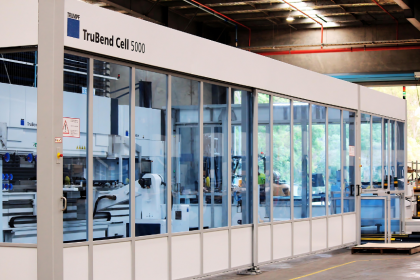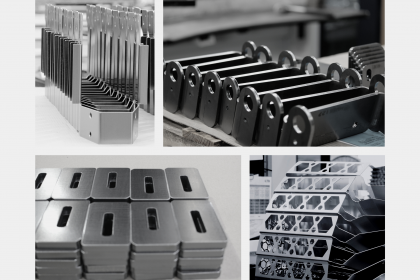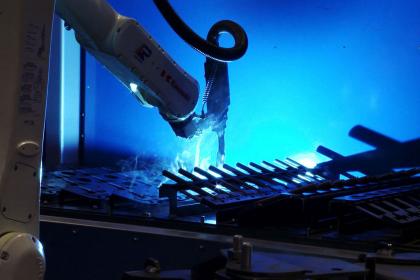Precisely cutting metal components is a crucial part of the manufacturing process. Laser cutting specifically can quickly achieve complex and detailed shapes, holes and lines on almost any metal sheet. Because of this, it’s able to reduce your costs by shortening production time and eliminating the need for some machining and tooling.
We’ve discussed the basics of laser cutting before (compared to plasma cutting), but what about the different subtypes within laser cutters? At GCI, our in-house laser department uses both fibre and carbon dioxide (CO2) variations. Which one is right for your project depends on your specific needs.
| |
Fibre
|
CO2
|
|
Faster thin metal cutting (less than 5 mm)
|
✅
|
❌
|
|
Suitable for reflective metals, such as brass, copper and aluminium
|
✅
|
❌
|
|
Smoother finish and edge on thicker metals
|
❌
|
✅
|
|
Quicker repetitive, straight line cutting
|
❌
|
✅
|
|
Lower energy consumption
|
✅
|
❌
|
How does CO2 laser cutting work
CO2 lasers are the more mature technology, having first been used in the manufacturing industry in the 1980s. These machines generate light by combining carbon dioxide and nitrogen gasses, and then magnifying those photons of light into a focused beam with a wavelength of about 10 microns.
Using a series of mirrors, this light is then directed onto the material to cut it. There is some warm-up time before CO2 lasers can begin cutting and their need for mirrors, piping and pumps to direct and control the gasses make them more maintenance heavy.
How does fibre laser cutting work
Fibre lasers had been in development since the 1970s, but only became suitable for manufacturing in the 2000s. Since then, they’ve rapidly become the favoured choice for several types of cutting applications. These machines also generate photons of light, but do so with optical fibres (rather than with gasses).
The light wavelength from fibre lasers is much lower than from CO2 lasers, at around 1 micron. Because of the lack of aligned mirrors and sensitive componentry to hold and transport gases, fibre laser cutters tend to be smaller. They are also less expensive to run and less susceptible to breakdowns.
When GCI Group uses CO2 laser cutting
As a well established technology that’s been an industry standard for over three decades, CO2 lasers are an important part of our cutting portfolio. When working with thicker metal, CO2 machines are the preferred choice. They typically achieve a more polished finish and better edge quality than fibre, outside of very thin applications.
There are also some instances where CO2 machines are faster than fibre, and therefore result in superior turnaround times. This is the case for jobs with either highly repeatable or multiple straight cuts. This is primarily due to quicker piercing time of CO2 cutting.

When GCI Group uses fibre laser cutting
The more modern technology, fibre has several advantages that make it essential for certain projects. When cutting thin metals, fibre can be up to five times faster than CO2. It’s also the much more energy efficient system, requiring a third of the power for an equivalent result. For those committed to green manufacturing, fibre is the right option.
The smaller wavelength light produced during laser cutting is also well suited to metals like copper and brass. These surfaces have the potential to cause issues, such as damaging reflections, to machines that produce their lasers with CO2.
Laser cutting from GCI
At GCI Group, our quality promise means that we use the best laser cutting technology for your application. We continue to invest in both CO2 and fibre laser cutting machines from the world renowned Trumpf Group to ensure the best results for our clients.
Get in touch with our team on 07 3807 0300 to find out more about our advanced laser cutting services.






